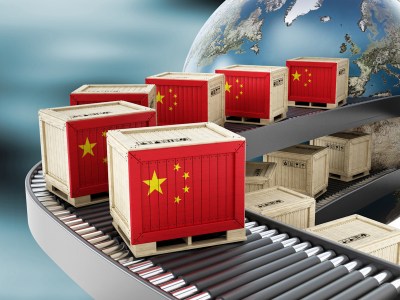China’s government has unveiled new measures to help its exports keep growing in the second half of this year amid slowing demand in Europe and the United States.
On Tuesday, China’s Ministry of Commerce said it would help exporters with export credit insurance and tax benefits, and make it easier for them to participate in trade exhibitions overseas.
The ministry said it will also set up more pilot zones to boost cross-border e-commerce, provide support to the logistics sector and reduce red tape at the border. The new measures were announced after China announced in early September that its year-on-year export growth rate fell to 7% in August from 18% in July.
Economists said China would hopefully maintain a single-digit growth in exports in the second half of this year but slowing demand in the West, as well as geopolitical issues and the country’s stringent Covid rules, is casting a shadow over its foreign trade.
On Monday, the Organization for Economic Cooperation and Development (OECD) said global economic growth would slow from 3% this year to 2.2% in 2023 due to the prolonged Russian war in Ukraine.
The OECD said United States GDP growth would slow from 1.5% in 2022 to 0.5% next year while the European Union’s would fall from 3.1% to 0.3%. It said China’s economic growth would slow from 8.1% last year to 3.2% in 2022, the lowest level since the 1970s.
The US dollar index (USDX), which tracks the value of the US dollar against a basket of global currencies, has jumped by 8.1% from 105.9 to the current level of 114.6 since the beginning of August. The renminbi has depreciated about 7% from 6.74 to 7.25 per US dollar over the same period.

However, a weaker yuan did not help much to boost China’s exports as high inflation dampened demand in the US. Last month, China’s exports to the US declined 3.8% to US$49.8 billion year on year. China’s imports from the US also dropped 7.3% to $13 billion in the same period.
During the first seven months of this year, China’s US-destined exports grew 15% year-on-year to $347.5 billion while imports from the US rose 2.5% to $104.8 billion.
China’s exports to Europe continued to rise 19.2% year-on-year in August, down just slightly from the 19.7% growth registered during the first seven months of 2022.
Chinese Vice Commerce Minister Wang Shouwen said in a media briefing Tuesday that slowing economic growth in Europe and the US had become the biggest challenge and uncertainty for China’s external trade.
“Demands from some key markets have recently declined, partly because of high inflation and inventory in these places,” Wang said. He said major economies had placed fewer orders in China and Southeast Asian countries since emerging from the pandemic.
Wang said he was not optimistic about the growth of China’s exports to Europe and the US in the coming six months but was confident that the growth rate would remain positive in the second half of this year.
On Tuesday, the State Council announced a set of new measures to stabilize China’s foreign trade, mainly by helping manufacturers receive export credit insurance and tax benefits more easily but also by encouraging e-commerce firms to boost their cross-border trade. It also said it would improve China’s transportation and customs services to boost trade.
The State Council said the 10-day China Import and Export Fair, or Canton Fair, which will take place in Guangdong in mid-October, would be held together with a five-month-long online trade event. It urged all related government departments and state-owned enterprises to help implement the measures.
Aidan Yao, a senior emerging Asia economist at AXA Investment Managers, said slowing demand in the world’s two major economies, the US and eurozone, could have far-reaching consequences for China’s exports.
Yao said in the case of a soft landing – whereby developed economies slow but avoid a recession – China’s export growth would fall from 16% currently to single digits by year-end.

However, Yao added that if the US and EU fell into recession, China’s exports to the two regions would inevitably decline in the second half of this year. He also warned that China’s trade would continue to be negatively affected by rising Sino-US trade tensions.
In June, Washington considered lifting the additional tariffs imposed on some Chinese goods by former US president Donald Trump in the hope such a move would ease fast-rising US inflation. At the time, Chinese manufacturers of products such as bicycles were expected to benefit.
But unabated political tensions between the US and China, including over Taiwan-related issues in the summer, caused the Biden administration to say on September 2 that it would not lift the extra tariffs on Chinese goods for the time being.
Read: China’s state media turning on Putin’s war
Follow Jeff Pao on Twitter at @jeffpao3

